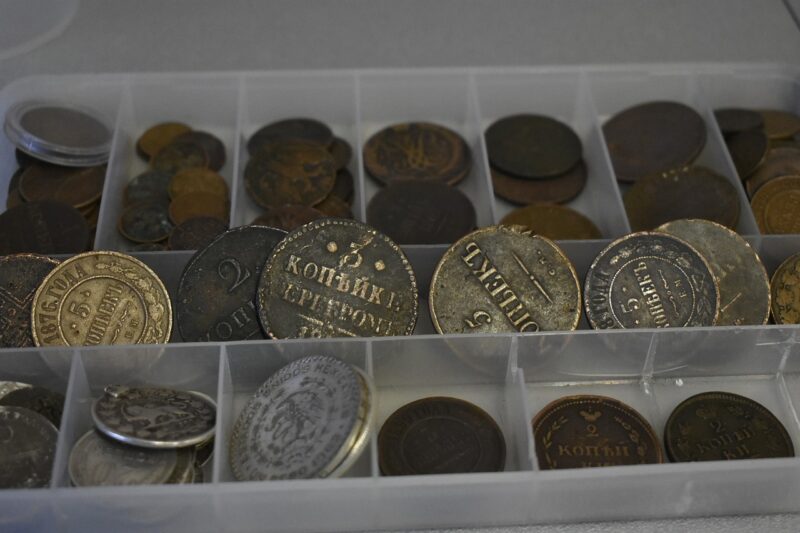The History of Gold Coins: How This Metal Became the Standard of Wealth and Currency
November 14, 2024

Gold coins have captivated human imagination for thousands of years, symbolizing wealth, power, and the sophistication of civilization. Their beauty, rarity, and durability have made them a preferred choice for currency and ornamentation. This article explores the historical significance of gold coins, examining how they became the standard of wealth and currency across cultures and epochs.
1. The Allure of Gold: A Precious Metal Through Time
Gold has held a unique place in human culture since prehistoric times. Its distinct yellow color, luster, and non-tarnishing properties set it apart from other metals. Evidence suggests that gold was used as ornaments in ancient Egyptian tombs as early as 3,000 BCE.
Gold was first recognized for its value in trade around 2,600 BCE, leading to its uses not just as decorative items but as units of exchange. The association of gold with divine favor and royal power solidified its status as something more than just a precious metal. It became a symbol of immortality, serving both economic and cultural functions.
2. The Birth of Coinage
The first known coins were minted in the ancient kingdom of Lydia (modern-day Turkey) around 600 BCE. The Lydians were among the first to standardize the weight and purity of gold, producing coins that were uniformly shaped and stamped with images. These coins bore the insignia of the Lydian king, Elymas, establishing a trust in the minted currency.
This innovation in currency eliminated the need for barter and allowed for trade to flourish. Gold coins quickly spread throughout the Greek world, with the Athenians introducing their coins featuring the goddess Athena and the owl, making them powerful symbols of wealth and power.
3. Gold Coins in the Roman Empire
As the Roman Empire expanded, so did the standardization of currency, heavily using gold for coinage. The Roman coinage system introduced various gold coins like the aureus and the solidus, which further cemented gold’s status as the realm’s standard currency.
These coins featured depictions of emperors, gods, and significant symbols, serving both as a means of trade and a method of propaganda, reinforcing imperial power. The stability of the solidus, in particular, lasted for centuries, becoming a backbone of European currency long after the fall of Rome.
4. The Rise of Medieval Currency and Gold Coins
In the Middle Ages, the acceptance of gold coins continued to thrive across various kingdoms. The Byzantine Empire, evolving from Roman roots, introduced the Byzantine solidus, a gold coin that maintained a high level of value due to its consistent weight and purity.
Meanwhile, in England, the penny, originating from silver, started to switch to gold in the form of the noble coin under King Edward III. The rich history of European kingdoms was accompanied by the creation of various gold coins, contributing significantly to trade routes during the Crusades and the rise of mercantilism.
5. The Age of Exploration and the Spanish Gold Coins
The Age of Exploration in the 15th and 16th centuries led to an unprecedented discovery of gold by European powers in the Americas. Spanish conquerors exploited gold mines, producing vast quantities of gold coins such as the doubloon and escudo.
These coins flooded the European markets, leading to inflation but also enabling the financing of wars, voyages, and the expansion of empires. Gold coins thus became central to the economies of colonial powers, reshaping global trade economies.
6. Modern Era: Gold Coins and Currency Standardization
The 19th century marked the establishment of the gold standard, wherein countries defined their national currencies in terms of a specific amount of gold. This system facilitated international trade and investment by providing a stable basis for exchange rates.
Countries like Great Britain and the United States adopted the gold standard for their coins, cementing gold as a universal medium of exchange. However, the gold standard was ultimately abandoned during the Great Depression, leading to a system of fiat currency.
7. The Legacy of Gold Coins Today
Today, gold coins are primarily produced for collectors and investors rather than as currency. Modern issues, such as the American Gold Eagle and the South African Krugerrand, encapsulate both heritage and investment value. Collectors are drawn to the artistry and history involved in these coins, often fetching higher market prices than their gold content alone.
Gold coins continue to be a significant part of national and cultural heritage, symbolizing more than just wealth but a myriad of stories from ancient civilizations.
Conclusion
From their inception in ancient Lydian markets to their crucial role across global economies today, gold coins encapsulate the progression of human civilization, wealth, and culture. Their enduring appeal showcases not just precious metal but the narratives that connect us to our economic histories. The history of gold coins is, in many ways, a mirror reflecting the evolution of society and its values through time. As we continue to engage with the legacy of these coins, we recognize their importance as both currency and cultural artifacts. Whether for investment or collection, gold coins remain a testament to our enduring fascination with this precious metal.






